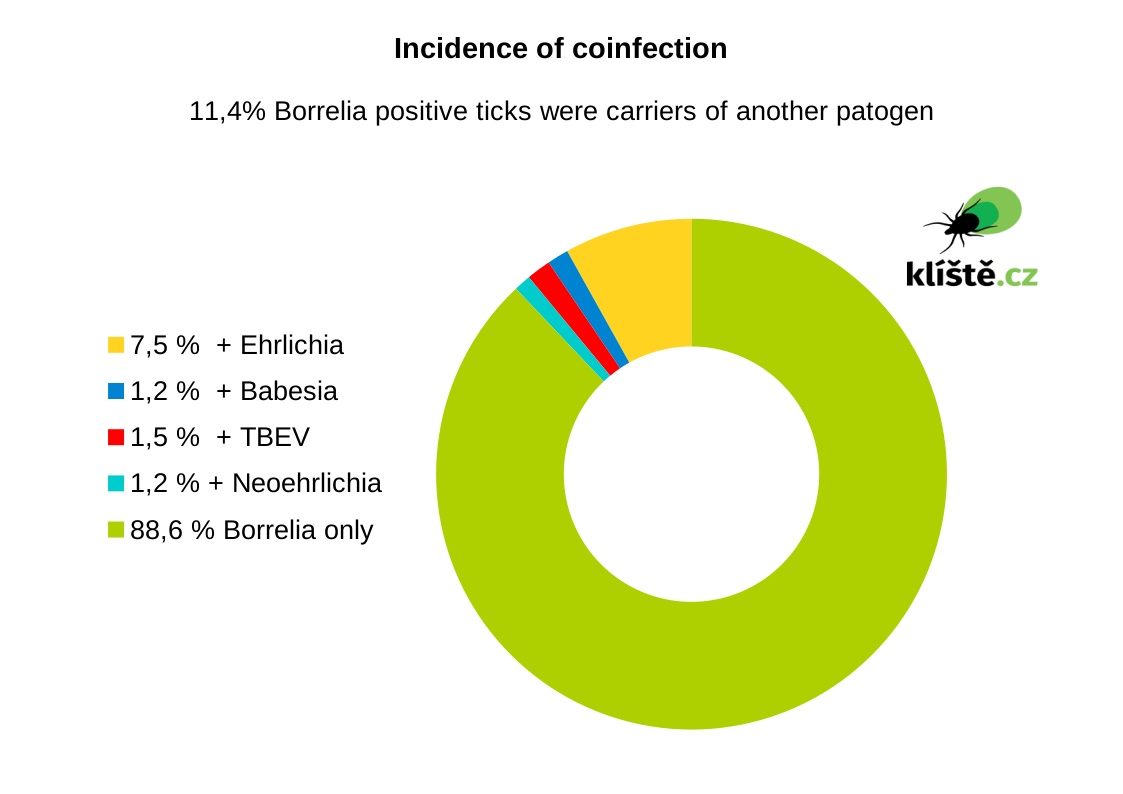A tick may be a carrier of more than one serious disease.
Treatment of borreliosis is often complicated by a concurrent infection caused by the presence of a further pathogen.
A tick may be a carrier of more than one serious disease. Coinfection usually results in a more intensive acute phase of the disease, with a higher amount of less frequently observed symptoms. Due to a problematic diagnosis, the convalescence phase becomes longer. Coinfection is often discovered only after the patient does not respond to treatment and it becomes clear that the symptoms are caused by another pathogen.
The following incidence of coinfection was observed in our laboratory:
Ticks positive for Borrelia infection were also infected with one of the following pathogens in 11,4 % of cases.
7,5 % were simultaneously carriers of Anaplasma phagocytophila (disease causative agent of Ehrlichiosis)
1,2 % were simultaneously carriers of Babesia sp. (disease causative agent of Babesiosis)
1,5 % were simultaneously carriers of tick-borne encephalitis virus (TBEV).
1,2 % were simultaneously carriers of Candidatus Neoehrlichia mikurensis (disease causative agent of Neoehrlichiosis)

These data indicate that ticks simultaneously carrying multiple pathogens are not rare.
Considering that the antibiotics used for borreliosis treatment must not be effective against all other pathogens possibly present in the tick, timely diagnosis and selection of appropriate treatment is very important.
Most commonly, coinfections of borreliosis with ehrlichiosis or babesiosis were observed. Patients with coinfections show more diverse, more intense and persistent symptoms. Incidence of the borreliosis-typical red rash (erythema migrans) is lower and patients more commonly develop flu-like symptoms such as fever, chills, sweating, headache or nausea. Spleen enlargement is also common. If patients develop anemia or low platelet counts, this can signal a babesial coinfection. Neutropenia, a decrease in the white blood cell counts, may indicate coinfection with ehrlichiosis. Severe is also coinfection with neoehrlichiosis, because for this newly discovered disease there are no reliable serological tests yet. Tick associated diseases are usually not present at the time of flu season, and thus lyme disease patients with persistent influenza symptoms, anemia, trombocytopenia, who do not respond to treatment should be tested for possible coinfection with babesia.
Treatment of coinfections can be lengthy, which is caused by late diagnosis of further pathogens and therefore inadequate treatment.
Further information can be found here:
Pokro?ilá témata v lymské nemoci